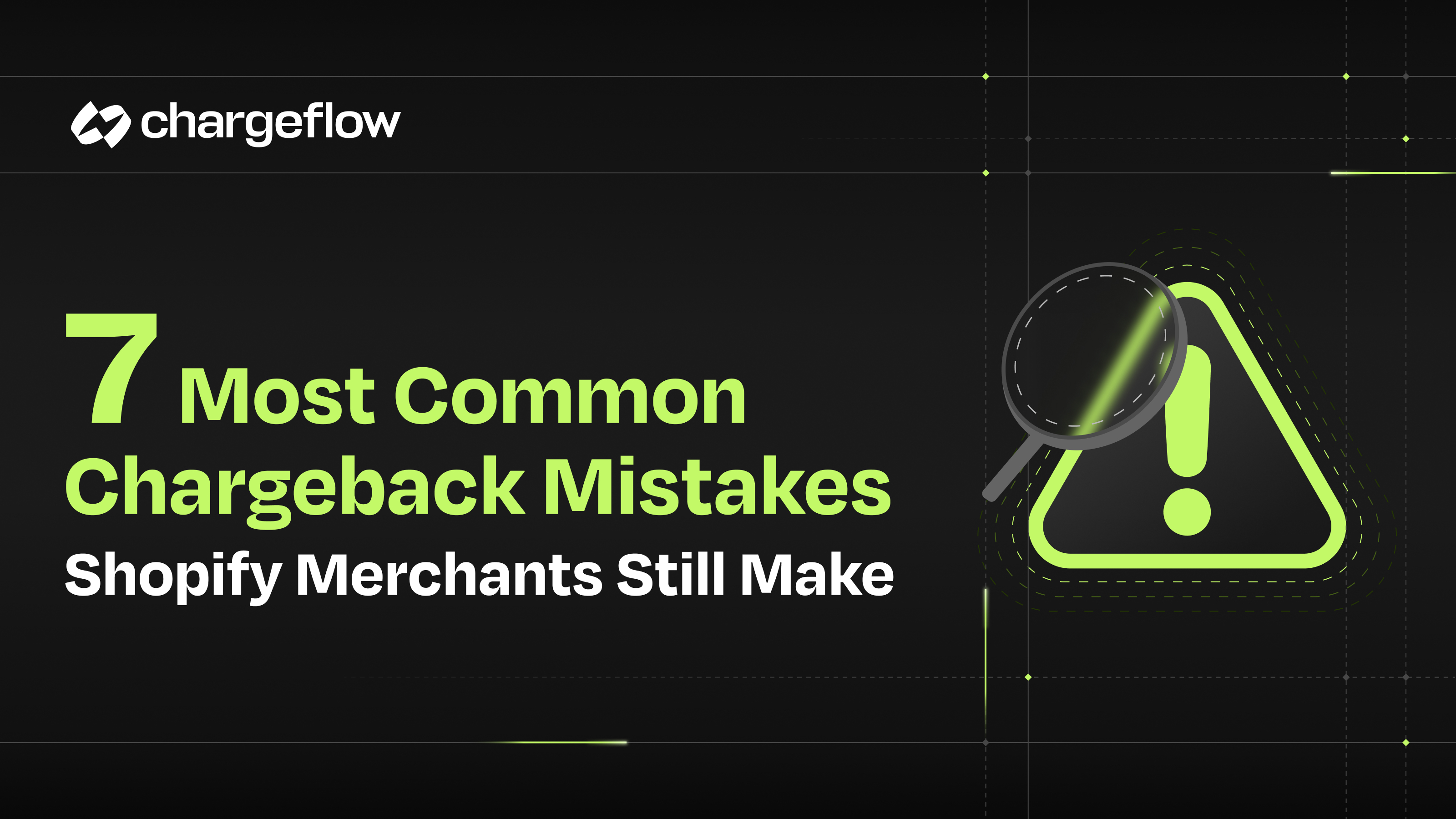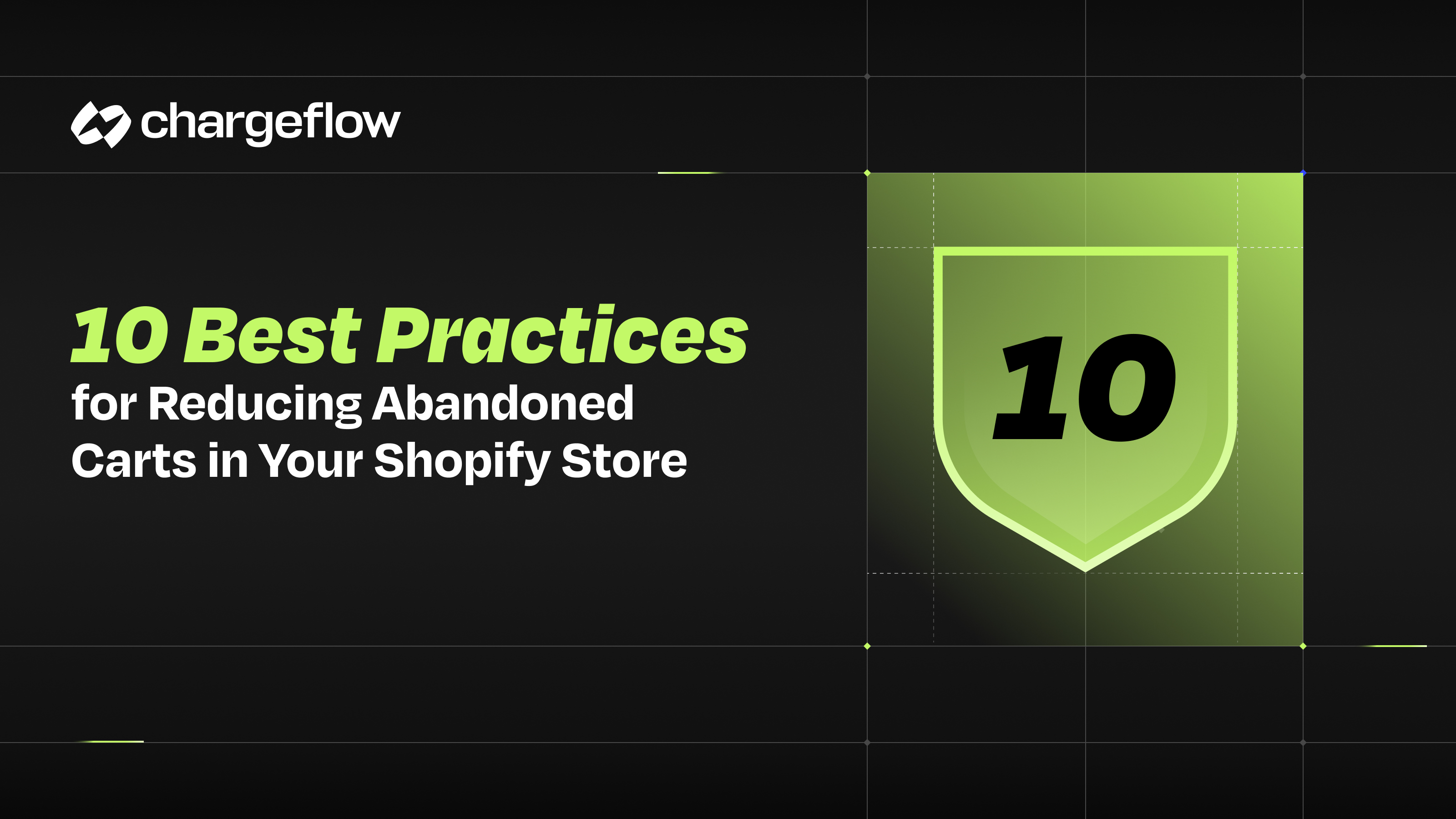How to Reduce the Number of PayPal Chargebacks You Get

Chargebacks?
No longer your problem.
Recover 4x more chargebacks and prevent up to 90% of incoming ones, powered by AI and a global network of 15,000 merchants.
With the PayPal chargeback resolution process favoring cardholders, preventing chargbacks should be a priority for your business. Learn how to do that.
The process of resolving PayPal chargebacks generally favors cardholders for several reasons. The chargeback concept is a consumer protection instrument formulated as a recourse against fraudulent or erroneous billings. Hence, the burden of proof lies with merchants to justify charges. That automatically makes you "guilty until proven innocent," creating a presumption of innocence for cardholders.
And then there's the growing competition among issuers. The need for higher customer satisfaction ratings often leads to lopsided chargeback policies that inadvertently create room for friendly fraud.
As issuers continue to have these zero-liability policies to satisfy cardholders, every seller must prioritize chargeback reduction to minimize losses. Today’s piece has loads of exclusive insights to help reduce the number of PayPal chargebacks you get.
Proactive Measures to Reduce PayPal Chargebacks
The first step in reducing the number of PayPal chargebacks you get is to grasp the attack vectors and pinpoint vulnerabilities in your business model.
Recall that in the first installment of this series, we highlighted that PayPal has grouped the reasons why cardholders file chargebacks into three main categories:
- Item Not Received: The customer claims they paid for an item but have yet to receive it.
- Significantly Not As Described: The customer says they received an item that looks considerably different from what they expected when placing the order, either because the item received was impaired, looked different online, or has significant defects you should have disclosed at the point of sale.
- Unauthorized Transaction: The buyer claims they did not authorize a bill or someone made a purchase from their PayPal account without permission.
With that in mind, let’s examine proactive measures to reduce potential PayPal chargebacks stemming from these attack vectors.

How to Reduce Item Not Received PayPal Chargeback
Use these proven best practices to reduce Item Not Received PayPal chargebacks:
Make it impossible for the buyer to claim non-receipt prematurely
- Think of shipment delays when setting delivery timelines. Uncertainty in shipment arrival date causes some buyers to file chargebacks precipitously.
- Keep communications channels open to minimize anxiety in the event of order delays.
Adhere to industry best practices when shipping orders
- PayPal’s User Agreement requires that you ship every physical merchandise with online tracking, as traditional shipment receipts do not affirm delivery to the receiver.
- You should also obtain signature confirmation for transactions exceeding $750 to verify delivery beyond all reasonable doubts.
- Insure fragile and high-value items shipments to limit risk. The insurance company will cover any loss if the item is damaged or lost in transit. We should also note that:
- Shipping companies use several criteria to determine restitution for lost or damaged items.
- The extent of liability depends on the package you shipped, its declared value, and the shipping company you work with. Know what you're getting into before using the service.
- Use delayed shipping to circumvent losses on high-risk orders.
- PayPal advises delaying high-value and in-demand order shipment for a day or two, as scammers often request expedited shipping to resell items for profit.
- International shipping carries substantial risks; do your due diligence before shipping overseas.
Note! Scammers can reroute mailing orders after shipment. If the customer suggests you use their shipping company to save cost, pay them no mind, as that will negate PayPal Seller Protection when a dispute arises. Read more about seller protection coverage.
PayPal merchant Anna Sz: “Hey loves, due to an unwarranted PayPal chargeback I cannot access the funds to continue sending out the Gunslinger plushies currently. I will resume sending them out as soon as possible. I apologize for the trouble and thank you for your patience.” (Via X)
How to Reduce Order Significantly Not As Described PayPal Chargeback
Use these proven best practices to reduce Order Not As Described PayPal chargebacks:
Fine-tune customer journey touchpoints and the checkout experience
- Be available and responsive to address concerns promptly.
- Monitor transaction irregularities and proactively address red flags like unusual purchase patterns or high-risk orders, to prevent friendly fraud.
- Follow up with customers after their purchase to confirm satisfaction, provide order updates, and encourage feedback, fostering positive relationships and reducing the likelihood of chargebacks.
- Streamline the checkout process with a simple and intuitive interface to reduce the likelihood of customer errors or frustrations that could result in chargebacks.
- Proactively update product listing to reflect any out-of-stock situation.
Strengthen your product descriptions and images
- If the product description lacks substance or misleads the buyer, it dampens the joy of product discovery.
- Provide comprehensive product descriptions, with images and specifications for customers to make informed purchases, minimizing dissatisfaction and disputes.
- Disclose any operational faults or cosmetic damage.
Returns and refunds are often a source of controversy for retailers. Use the tips in this article to handle returns and refunds effectively. Educate your customers and encourage them to resolve disputes directly with you.
How to Reduce Transaction Unauthorized PayPal Chargeback
Your product line, customer demographics, and risk tolerance: these elements inform the level of investment you make in fraud prevention hinges on several factors. If you deal in high-value, sought-after goods, prioritizing robust fraud detection and prevention becomes paramount.
Use these proven best practices to reduce "transaction unauthorized" PayPal chargebacks:
Do your due diligence before shipping
- Take precautions before accepting to ship overnight or shipping to fraud-prone zones.
- Some telltale signs of impending fraud include:
- Shipping companies or P.O. boxes: Unlike residential addresses, shipping to P.O. boxes and shipping companies attract significantly high risk. Regardless of the legitimate use cases, liar-buyers use the anonymity afforded by shipping companies and P.O. boxes to escape justice.
- Shipping to a forwarding agent: Scammers pay freight forwarder vendors to reroute merchandise to alternate destinations, often overseas. When in doubt, search the shipping address online to track the final destination of your package.
- Unoccupied houses: If the customer’s address appears in listings as available for rent or sale, it may be vacant. And you can track that by searching the address online.
- Smurfers: Multiple orders from different customers sharing the same shipping address indicate fraud. Scammers often enlist money mules to accept deliveries at their location and forward the packages to the fraudster's address.
- Change of address after payment: Where there may be valid reasons for the buyer to change their address after payment, you should know that fraudsters also use this strategy. They first enter a legitimate address to bypass the system and then contact you to change the address afterward.
Use anti-fraud tools to track anomalies
Fraud prevention tools will highlight frequent requests for the same product or service, repeated transactions from a single PayPal account within a short period, heightened volume of international orders in a brief timeframe, or orders occurring at unusual times of the day.
Scammers often pay more than the value of merchandise and request a refund through a different channel. Look out for such cases. Also, exercise caution before accepting an order if the customer's email address looks suspicious.
Prevent PayPal Chargeback Losses With Chargeback Alert
The sad truth is that while every strategy we’ve shared in this piece works, they will not prevent buyers from abusing the chargeback system to get freebies. Why? Well, because, unfortunately, the chargeback system is customer-centric, making it easy for buyers to abuse the system and get away with it. So, regardless of how disciplined you are in your PayPal chargeback prevention efforts, cases will slip through the cracks.
That's where Chargeflow alerts come in. The system helps you proactively avoid chargebacks by intercepting the case at this initial stage. Think of it as having a reliable and capable whistleblower in a company you invested in. You'll always be informed about any impending fraud before it impacts your investment.

Benefits of Chargeflow Alerts
Chargeflow Alerts enhance your chargeback management with several unique benefits:
- Alerts Guarantee: Pay only for alerts that effectively prevent chargebacks.
- Zero Duplication Charges: Our unique technology ensures there are no duplicate charges for the same alert.
- One-Click Onboarding and Offboarding: Enjoy a seamless transition in less than 24 hours.
- No Dispute Fee: Avoid the standard $20 dispute fee for each prevented chargeback.
- Fully Hands-Off with Automated Refunds: Our system automatically matches and processes refunds.
- Guaranteed Decrease in Dispute Rate: Experience a tangible reduction in your dispute rates.
- Full Integration with Chargeflow Automation: Benefit from 360° chargeback protection.
- Universal Processor Compatibility: Compatible with every major payment processor, including all major card companies, for increased transaction acceptance.
PayPal Chargebacks Are Inevitable But Preventable
With customer acquisition costs rising – reportedly 5 to 25x higher than retaining existing customers – the dilemma for sellers lies in plugging chargeback fraud gaps without alienating their customer base. Visa identifies the removal of disputes from the payment ecosystem as the top priority for merchants, alongside a secondary concern regarding first-party misuse.
The strategies outlined in this article offer proven ways to avert various types of PayPal chargebacks. More so, Chargeflow’s dispute automation provides a reliable backup for instances where buyers exploit the chargeback system. Learn more about PayPal chargeback automation.

Chargebacks?
No longer your problem.
Recover 4x more chargebacks and prevent up to 90% of incoming ones, powered by AI and a global network of 15,000 merchants.






























.png)








